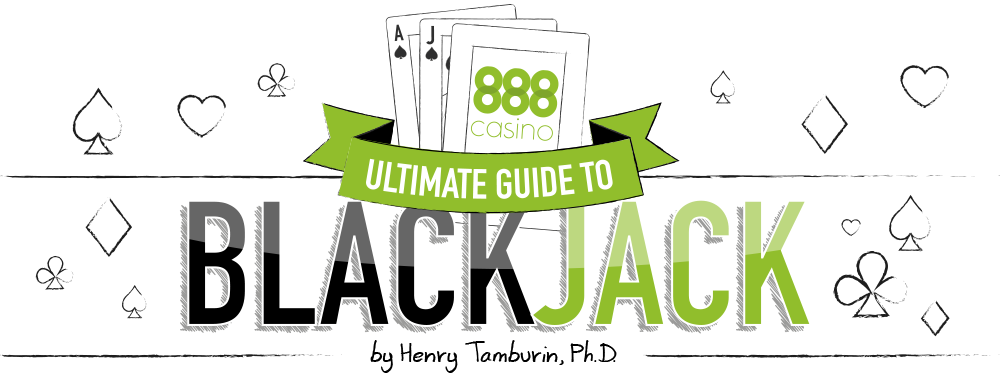
BOGUS BLACKJACK STRATEGIES

Now that you’ve learned how to play your blackjack hands accurately using the basic playing strategy, the next step on your journey to become a winning player is to learn how to bet. The most often asked question that I receive from blackjack players is, coincidentally, about blackjack betting systems so this is a good time and place to learn about them.
Specifically you will learn:
- The different types of betting systems.
- One blackjack system that I recommend for casual players who are playing blackjack only for fun.
- Why most betting progressions won’t give you a long-term edge at blackjack.
POPULAR BETTING SYSTEMS
What follows is a brief description of several popular betting systems that have been used by blackjack players. The reason I’m showing you these systems is so that you become familiar with them because sooner or later, you will come across them, either from a friend, a huckster, or perhaps a fool-proof blackjack system that you created and that you think will beat blackjack.

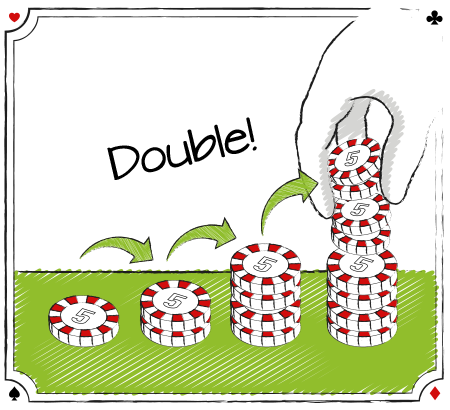
MARTINGALE
The Martingale betting progression was invented in the 1700s in France and it is an example of a negative progression. You begin the progression with (usually) a table minimum bet (say 1 unit), and if the bet loses, your next bet is double the previous bet. You keep doubling your bets until you finally win, at which point you have recouped all your losses in the progression and have a net win of 1 unit. I’ll explain the Martingale in more detail in Chapter 7.2.
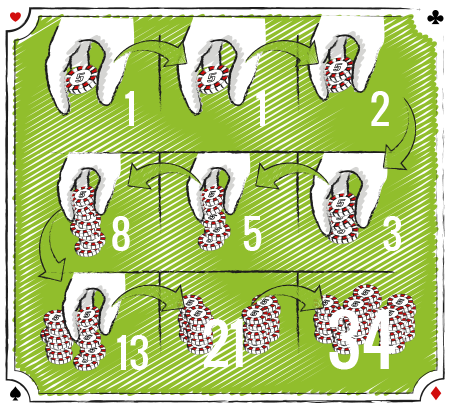
FIBONACCI
This is another example of a slightly more complicated negative progression. The betting progression is a series of numbers in which each number in the series is the sum of the last two numbers. For example, suppose the series is 1-1-2-3-5-8-13-21-34. Notice that any number in the series is the sum of the previous two numbers. Instead of doubling your bet after a loss, as with the Martingale, here you increase your bet per the sequence of numbers until you (finally) win a hand at which point you revert back to the starting 1 unit bet.
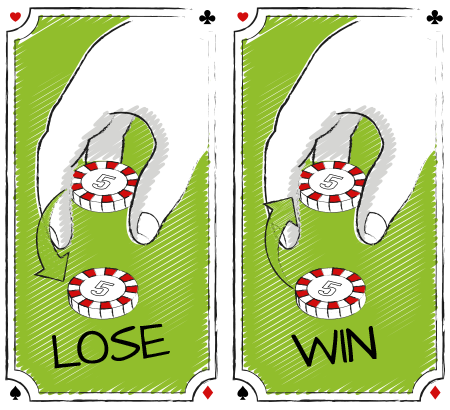
D’ALEMBERT
This betting system was named after a French mathematician and it’s another type of negative betting progression with a slight twist: you raise your bet by 1 unit if you lose and you lower your bet by 1 unit when you win. For example, bet 1 unit and lose, your next bet is 2 units. Lose again, and you would bet 3 units. If you win that bet, your next bet would be 2 units. And so forth.
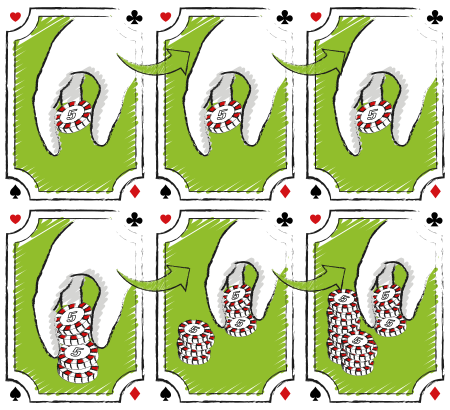
31
The series in this progression is 1-1-1-4-8-16 (which equals 31). If you lose, you bet the next number in the series. If you win, you bet double the last bet. If you win again, you start the series over at 1 unit. If instead you lose, you bet the next number in the series.

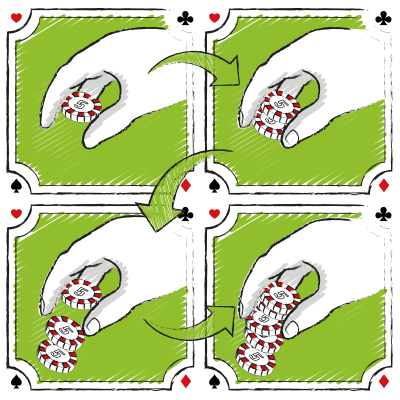
PARLAY
The theory of a Parlay betting system is to gradually increase your bets when you are winning but after several consecutive wins, you take down some of your profits. A simple and widely used Parlay is 1-2-3-5.
Here’s how it works:
- Start with 1 unit bet. If it wins,
- Increase you bet to 2 units. If it wins,
- Increase your bet to 3 units. If it wins,
- Increase your next (and last) bet to 5 units. If it wins,
- You lock up your 11-unit profit for the series and start a new series with 1 unit.
- At any point during the series that you lose a bet, start the series over again with 1 unit.

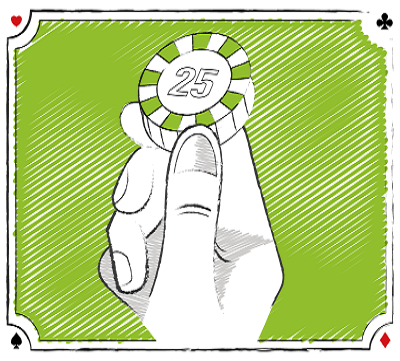
OSCAR’S GRIND
This is an interesting positive progression system that first appeared (50 years ago) in mathematician’s Allan N. Wilson’s classic book, The Casino Gambler’s Guide. It’s a very simple betting system for blackjack. You begin your progression with a 1 unit bet and after every win, you bet 1 unit more than the previous bet; after any loss, you bet the same as the previous bet. The goal is to win 1 unit for each series of bets with this stipulation: you never place a bet that would result in a win of more than one unit for the series.

WHY SOME BETTING SYSTEMS JUST DON’T WORK
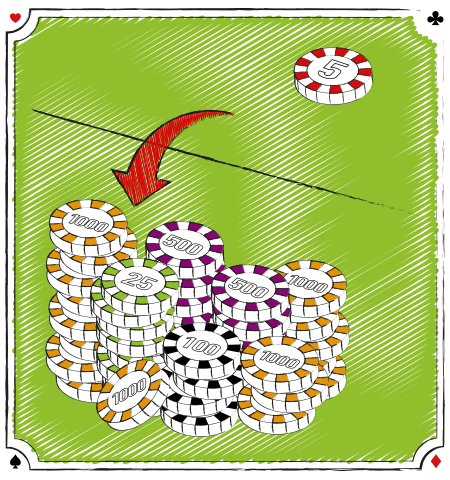
MARTINGALE BETTING PROGRESSION
The Martingale betting system is easy to understand and use: you just double your bet after every loss until you finally win, at which point you will be ahead by one betting unit. For example, suppose you wager $10 and the results of the next three hands are loss, loss, and win (L-L-W). Using the Martingale system, you lost $10 on the first hand, $20 on the second hand, and won $40 on the third hand. You wind up with a net win of $10, which is the goal of the progression, to win an amount equal to your starting wager.
How can there be anything wrong with the logic of the Martingale? Just leave the table after a win and you always walk away with a profit. Right? Well, yes and no. Long streaks of consecutive losses will doom the Martingale player, but pundits will always counter with “the chance that this will happen is slim.” Really? Let’s take a look.

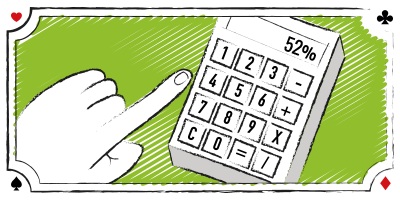
THE MATH FOR THE MARTINGALE
You have about a 52 percent chance of losing a hand in blackjack (excluding ties). The chance that you will lose, say, ten consecutive (resolved) hands is 0.145 percent.
This means:
- You will average one sequence of ten losing hands (excluding ties) in about every 692 sequences of ten hands.
- This losing streak will occur about once in every seven hours of play (assuming you play 100 resolved hands per hour).
- And get this ... you don’t know when that string of ten consecutive losses will occur in the seven hours (of course, it may not occur at all).
- You have roughly a 6 percent chance of losing ten in a row in the first hour; a 12 percent in the first two hours; and a significant 29 percent chance after only five hours.
- Sadly for Martingale bettors, a streak of ten consecutive losses is not such a rare event after all.
What about all those frequent winning sessions that Martingale players and system sellers always tout about this blackjack system? The fact is this:
- Although most players will walk away a small winner most of the time, the money you will lose in that one catastrophic losing session will more than completely wipe out all the money that you will win in your more frequent winning sessions.
- In the long run, your wins and losses will add up to the casino’s edge, and the amount of money that you will lose using the Martingale betting system will be close to the casino’s theoretical edge in the game times the total amount of money that you wagered, the same as it is for every other player who plays blackjack (except card counters).
- In other words, mathematically speaking, you can’t, and you won’t, gain the advantage over the casino using a Martingale betting system.
There is another more practical issue with the Martingale that also dooms most players who use it, and it’s this:
- On an extended losing streak, you won’t be able to double-up your bets because you will bump up against the maximum betting limit imposed by casinos.
For example, suppose you are a $5 bettor and you lose eight (resolved) hands in a row. Your losses at this point total $1,275 (gulp!). Assuming you have the bankroll (and the guts) to double up again, your next wager according to the Martingale is $1,280, which exceeds the $1,000 table betting limit (that you’ll find in most casinos on low-limit tables). Unfortunately, there is no way for the progressive bettor to bet enough to recoup his losses when this occurs (other than to move to a higher-limit table).
What about the positive betting progressions I mentioned in Chapter 7.1 where you increase your bet following a win, hoping for a long streak of wins? Most of the time a player will wind up his playing session with a small loss, and rarely will he experience a big winning session. Just as in the negative betting progressions, the wins and losses in the long run will add up to the house edge.

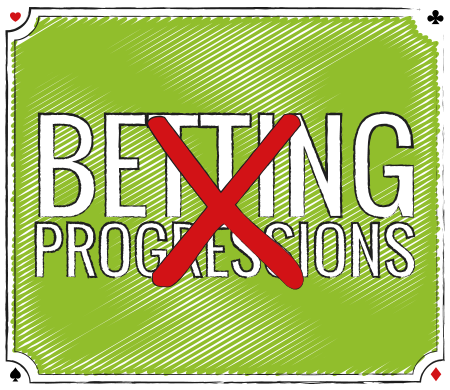
SUMMARY
When it comes to using betting progressions to gain the advantage at blackjack, these are the facts:
- The odds of winning any hand in blackjack are not dependent on whether you won or lost the previous hand, which is why betting progressions fail.
- No progressive betting system alone will overcome the house edge in the long run.
My recommendation for basic strategy players who want to gain the long-term advantage is to bet using one of the card counting systems that I will explain in Chapter 10. This is the only way you can get the long-term advantage playing blackjack.


PLAYING BLACKJACK FOR FUN
I almost didn’t write this section because what I’m about to suggest will not give you the long–term advantage. However, I’m a realist and understand that some players want to play blackjack only for “fun” and are content doing so, knowing that in the long run they will lose money.
If you happen to be one of these players, my hope is that I can convince you to at least learn one of the simple card counting systems I will discuss in Chapter 10.3. Nevertheless, if your intent is to play for fun and you don’t want to just flat bet on every hand (i.e., bet the same amount), I would suggest the Oscar’s Grind positive betting progressions (discussed in Chapter 7.1). You’ll win often using it but remember this:
- At some point and you don’t know when, you will experience a long series of consecutive losses that will wipe out all your smaller gains.
- In the long run, you are guaranteed to lose about 0.5% of all your bets.

KEY TAKEAWAYS:
- Blackjack players have tried for decades to use solely a betting system (with or without basic strategy) to beat blackjack.
- The betting systems are based on the results of the previous hand.
- With positive betting progressions, you increase your bet following a win.
- With negative betting progressions, you increase your bet following a loss.
- Some betting systems use a mix of positive and negative progressions.
- In the long run, betting progressions alone will not give you the edge at blackjack.
- Martingale betting progression has you doubling your bets following a loss.
- It is a dangerous betting system because you will sooner or later wind up with a catastrophic losing session that will wipe out all your gains.
- Casinos protect themselves again a Martingale system by setting maximum betting limits on their tables thus preventing the Martingale player from continuing his series of double-up bets.
- No matter what progressive betting system you use (positive or negative progressions), you will lose money in the long run equal to approximately 0.5% (house edge) times the amount of money wagered.
- Basic strategy players who want the long-term advantage when they play blackjack should use a card counting system that will tell them when to increase their bets.

TEST YOURSELF
Try to answer the following questions based on the information in Chapter 7.
- Betting systems used by blackjack players to try to beat the game are known as what?
- With the Martingale system, you double your bets following a losing hand. True or False?
- The goal of a series of bets in a negative betting progression is to win what?
- What are the two major issues of negative betting progressions?
- With a positive betting progression, you increase your bets following a winning hand. True or False?
- In the long run, your wins and losses when you use a progressive betting system will be equal to the house edge times the amount you wager. True or False?
- Oscar’s Grind will give you the long-term advantage. True or False?
- You are using the Oscar’s Grind positive betting progression. You start your series with a 1 unit bet. The bet loses. Your next bet is 1 unit and it loses. Your third bet is 1 unit and it also loses. Your fourth bet in the series is 1 unit and you win. Your fifth bet is 2 units and it wins. How much should you wager on the sixth bet in this series?
- If you want to have the long-term advantage playing blackjack, as a basic strategy player you need to do what?
Answers
- Progressive betting systems.
- True.
- One unit.
- A bad string of losses will wipe you out, and you could exceed the maximum betting limits.
- True.
- True.
- False.
- You should bet 1 unit (not more). Reason: If the bet wins, you would be ahead 1 unit, which is the goal of each series. (See Chapter 7.1)
- Learn a card counting system that will show you when to vary your bets.

